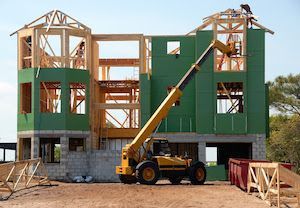Seeking to see your dreams of owning a home come true is a thrilling endeavor, but it requires rigorous preparation, organization, and budgeting on your part. Our quick guide will provide you with some pointers on how to ensure that you can raise the funds necessary to ensure that your self-build stays on track.

Self-build: what do we mean?
The term “self-build” refers to a project in which the intended house owner has complete control over the design and building of their own home. You should not be concerned if the prospect of getting your hands filthy and climbing up ladders makes you feel uncomfortable – some self-builders prefer to get involved with the hard work while others choose to leave it to the professionals once they have approved the design.
It is a popular concept in areas with lots of free space. However, it is becoming a more practical option for individuals all over the world, not just in those countries with plenty of space. Those who have retired and want to build their final home, or families that are finding it difficult to find something that suits their needs might find self-build an attractive proposition.
It takes, on average, around two years to build a home from the ground up, from the time of purchasing the land to the time of moving in, although this is entirely dependent on how complicated and vast your project is.
It is critical to explore and determine whether or not self-building is right for you before commencing the process and reaching the point of no return.
While it requires a significant investment of time, money, and work, building your own house provides you with an unparalleled opportunity to design a home that is specifically fitted to your family’s needs.
Obtaining funding for your project
This is a major stumbling block for many self-build projects: how can you finance something of this magnitude?
You will be able to determine the final cost of your home by considering the location, scale, specifications, and design of your home, as well as the amount of labor you are willing to do yourself. There are a variety of options for raising the necessary funds.
The final cost of your home will be determined by the location, scale, design, and specification of your home, as well as how much of the construction labor you do yourself (if any). In order to fund your self-build project, you can use a variety of methods, such as selling your current house, remortgaging your property, or getting a self-build mortgage or loan. Of course, others turn to savings built up over time through investments such as stocks and shares can careful monitoring of the Polkadot (DOT) price.
Because the success of your project is entirely dependent on your budgeting abilities, be certain that you keep track of all of your outgoing costs and make payments as soon as they become due. Do not be too hard on yourself; if you start making adjustments later in the project, it will end up costing you more money than you anticipated.
Consider including costs for groundwork in your budget; any issues below the ground level, such as contamination of the soil, can be quite expensive.
For any unforeseen fees or charges, it is also critical to include a cash cushion in your budget, which should be between 10 and 20 percent of the total construction costs. It is possible that you will need to find temporary housing throughout the construction process, so plan ahead of time for that.

























